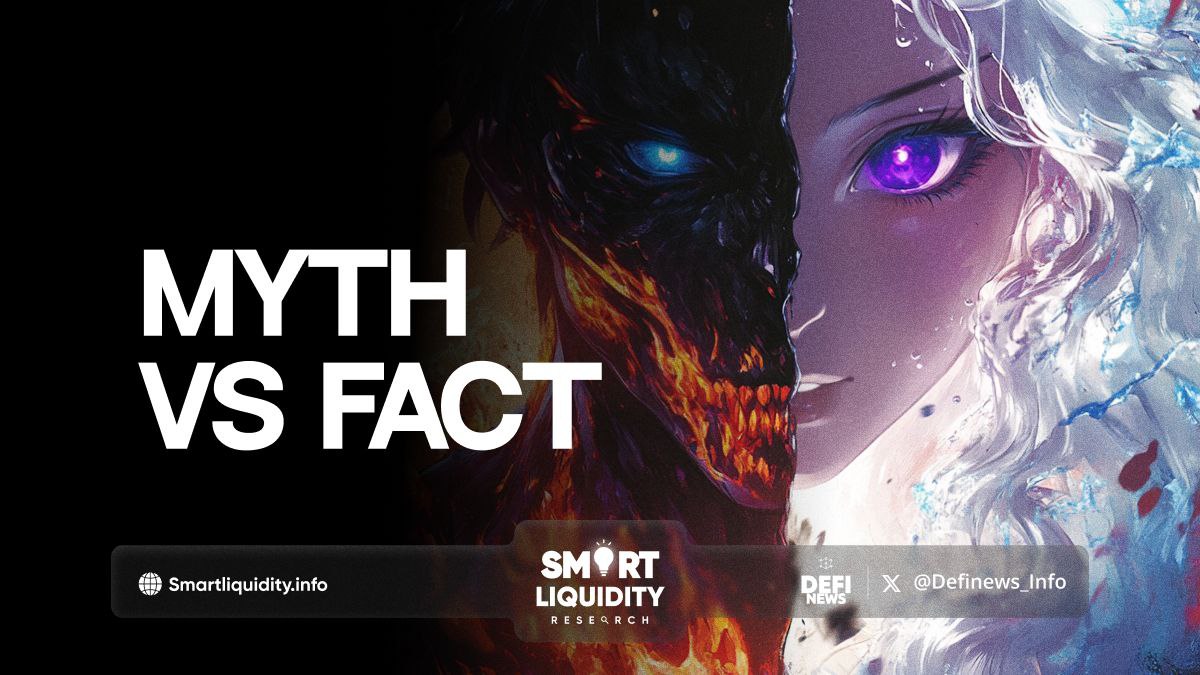DeFi: Myth vs. Fact


DeFi: Myth vs. Fact! The decentralized finance (DeFi) movement has surged in popularity, sparking countless discussions, debates, and predictions about its potential to disrupt traditional financial systems. Yet, with this rapid rise, numerous myths have clouded the true nature of DeFi.
This article will debunk some common myths about DeFi and highlight facts, providing clarity on what decentralized finance brings to the table.
Myth 1: DeFi Is Only for Tech Enthusiasts
Fact:
While DeFi was initially championed by tech-savvy individuals, it’s becoming increasingly accessible. Today, platforms are prioritizing user-friendly interfaces to simplify complex financial products, making DeFi accessible to a broader audience. Wallets like MetaMask and decentralized exchanges like Uniswap are designed to cater to both newcomers and experienced users, and educational resources are helping bridge knowledge gaps.
Myth 2: DeFi Is Completely Anonymous
Fact:
DeFi operates on public blockchains, where all transactions are visible and traceable. Although DeFi platforms don’t require traditional identification, the transparency of blockchain allows for pseudonymous transactions, not complete anonymity. Blockchain analytics companies actively track these transactions to support regulatory compliance and mitigate fraud.
Myth 3: DeFi Is a Get-Rich-Quick Scheme
Fact:
DeFi does offer high-yield opportunities, but these come with significant risks. Yield farming and liquidity mining can be lucrative, but they are also subject to volatility, impermanent loss, and sometimes even scams. Success in DeFi often requires thorough research, risk management, and a clear understanding of complex financial mechanisms.
Myth 4: DeFi Will Replace Banks Soon
Fact:
While DeFi provides alternatives to traditional financial services, it’s not poised to replace banks entirely shortly. Banks still play a critical role in the global economy, particularly for fiat on-ramps and regulatory compliance. However, DeFi does challenge traditional finance by offering decentralized lending, borrowing, and trading, allowing users to control their assets without intermediaries.
Myth 5: Smart Contracts Are Unbreakable
Fact:
Smart contracts are central to DeFi, enabling transactions without intermediaries, but they are not infallible. Vulnerabilities in code can lead to hacks, resulting in loss of funds for users. Regular audits and bug bounties are essential to improve contract security, yet no system is entirely foolproof.
Myth 6: DeFi Is Only Useful for Cryptocurrencies
Fact:
DeFi’s reach extends beyond cryptocurrencies. Through tokenized assets, DeFi can represent real-world assets like stocks, bonds, real estate, and commodities on the blockchain. Platforms are also working on innovative financial products, like decentralized insurance and prediction markets, to expand DeFi’s real-world utility.
Myth 7: DeFi Is a Lawless Space
Fact:
Although DeFi is decentralized, it’s not devoid of oversight. Regulators worldwide are exploring ways to enforce compliance while preserving DeFi’s decentralized ethos. While regulation is still evolving, many DeFi projects voluntarily comply with certain standards, especially regarding anti-money laundering (AML) and Know Your Customer (KYC) procedures.
The Future of DeFi: Myths Dispelled, Growth Accelerated
As DeFi grows, so does the understanding of its possibilities and limitations. Dispelling myths surrounding decentralized finance clarifies the unique value of DeFi and provides a balanced view of its potential to complement traditional finance. With innovation and regulatory cooperation, DeFi can evolve from a niche to a key player in the global financial ecosystem, building a more open and accessible financial future.




